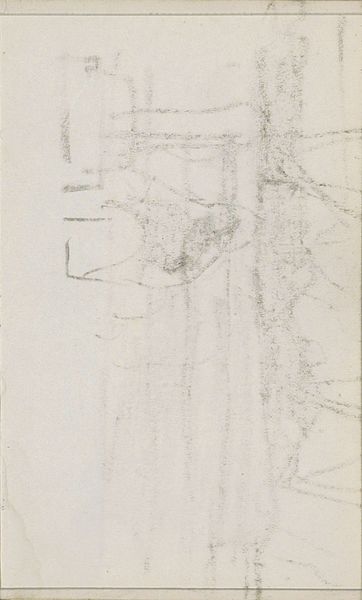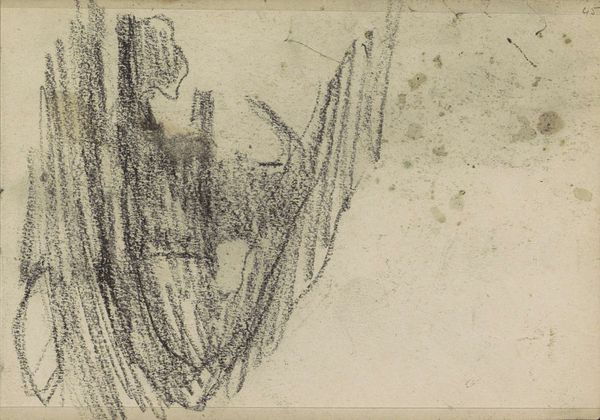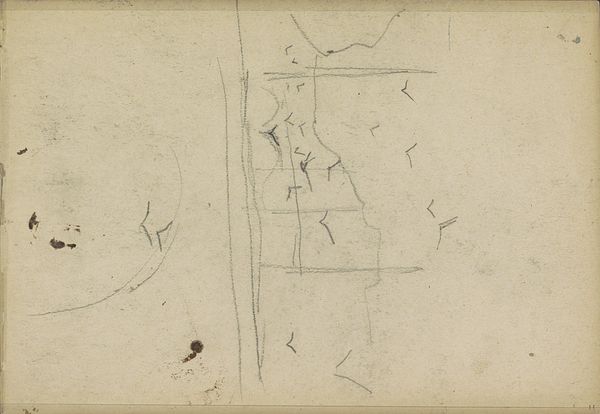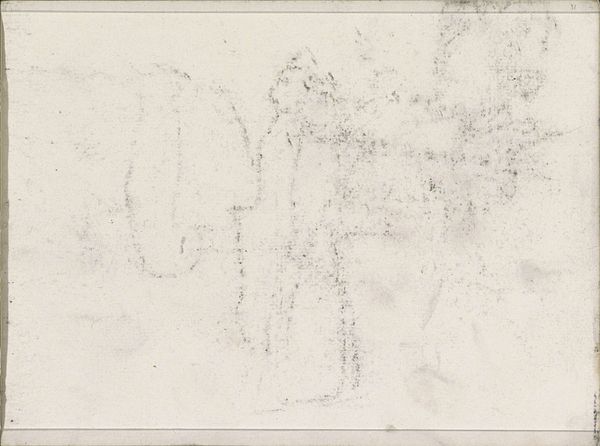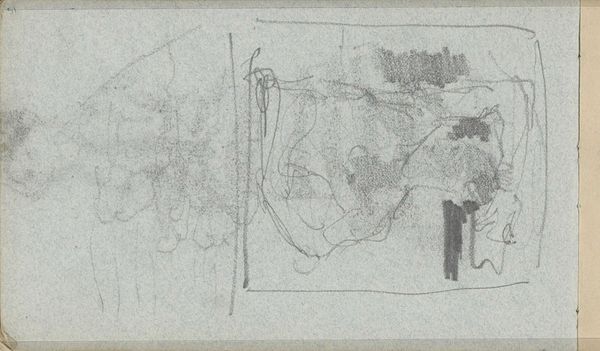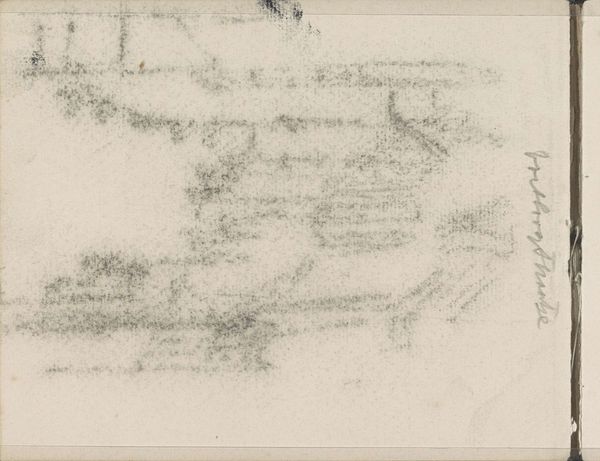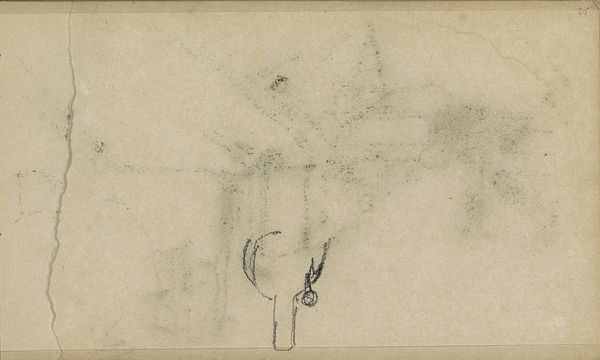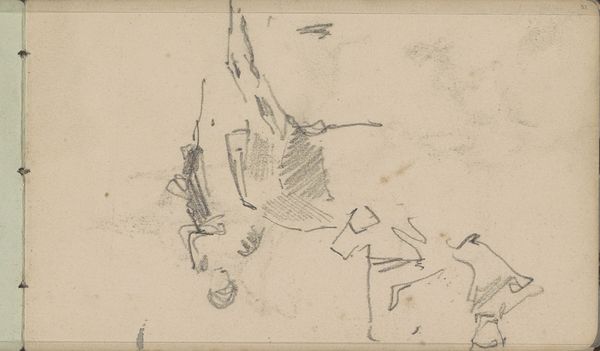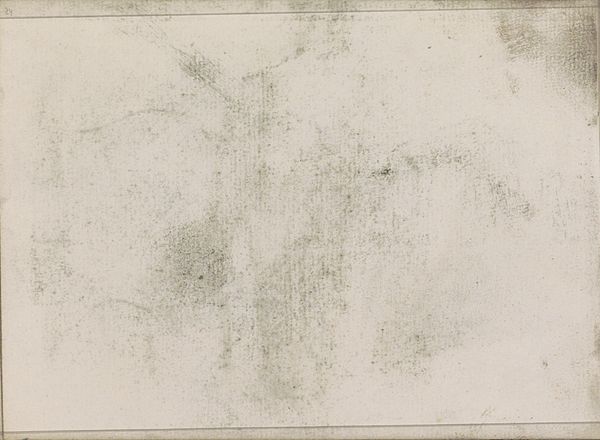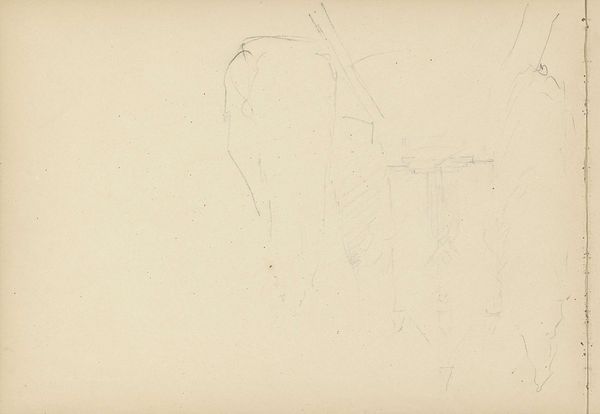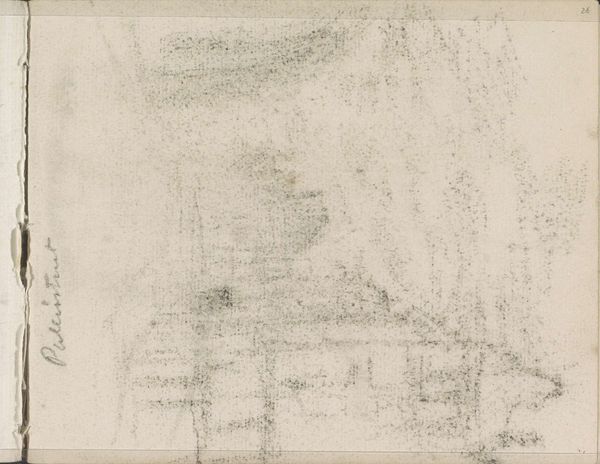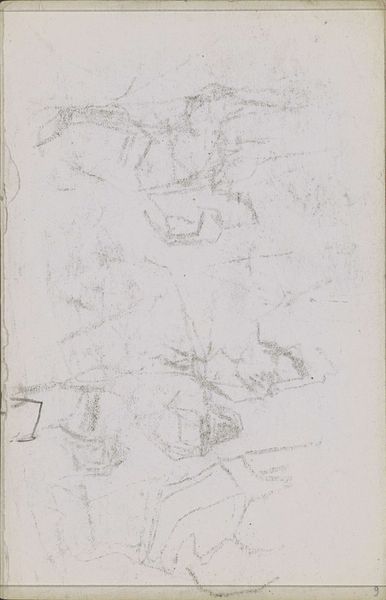
drawing, pencil, architecture
#
drawing
#
landscape
#
geometric
#
pencil
#
architecture
Copyright: Rijks Museum: Open Domain
Editor: Here we have Willem Witsen’s "Landschap, mogelijk met water en bebouwing," dating from around 1915 to 1921. It’s a pencil drawing, and what strikes me is how incomplete it feels, like a fleeting impression captured on paper. How do you interpret this work, considering it almost feels like a fragment? Curator: It is, indeed, a fragment. Consider Witsen's position in a rapidly changing Netherlands. The rise of industrialization was dramatically reshaping the landscape and society itself. The sketch aesthetic itself reflects this disruption. The lack of polish becomes a powerful commentary on the provisional nature of existence under modernity. How do you read the relationship between the geometric forms and the more naturalistic, blurred shapes? Editor: I see a tension, almost a struggle, between the man-made structures and the organic world. Is this a reflection of Witsen’s anxiety toward urban growth? Curator: Precisely! Now consider Witsen’s own social standing: a wealthy artist observing these changes. His position of privilege doesn't necessarily invalidate his observations, but invites critical thought about who gets to represent societal transformation and what perspectives might be missing. Incomplete images can raise essential questions. Do we fill them ourselves or search deeper to the context to grasp this rapid cultural development? Editor: That's fascinating. I never considered the social implications of an unfinished sketch. It opens up a whole new way of thinking about art and its relationship to society. Curator: It’s about recognizing the artist's position within the structures he is depicting, inviting critique. We need more such lenses on these depictions of reality and change, don’t you think? Editor: Absolutely, I see how analyzing the artist’s social context can enrich our understanding. Thank you!
Comments
No comments
Be the first to comment and join the conversation on the ultimate creative platform.
